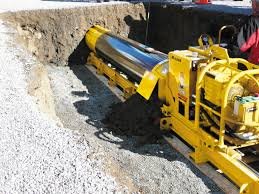In modern industrial operations, efficient and precise handling of materials is critical to ensuring product quality, operational safety, and overall productivity. Among the many techniques utilized in material transfer and processing, the use of vacuum environments for handling substances has emerged as a highly effective method across various sectors. This article delves into the advantages of managing materials within vacuum systems, highlighting how this approach enhances industrial processes.
Understanding Vacuum-Based Material Handling
Before examining its benefits, it’s important to grasp the fundamentals of handling substances in vacuum conditions. This process involves moving, storing, or processing materials in an environment where air pressure is significantly reduced below atmospheric levels. The vacuum can be created using specialized pumps and sealed enclosures designed to maintain low-pressure conditions.
Industries such as pharmaceuticals, food processing, chemicals, electronics, and aerospace have adopted this method due to its ability to preserve material integrity and improve control during handling. By eliminating or drastically reducing the presence of air and contaminants, vacuum-based systems offer distinct advantages compared to conventional material transfer techniques.
Enhanced Product Quality and Purity
One of the primary benefits of processing materials under vacuum is the ability to maintain high levels of product purity. Many industrial materials, especially powders, chemicals, and sensitive compounds, are prone to oxidation or contamination when exposed to air. This can lead to degradation, reduced efficacy, or spoilage.
In a vacuum environment, the absence of oxygen and moisture minimizes these risks. This is particularly crucial in industries such as pharmaceuticals, where the stability of compounds must be preserved to meet stringent quality standards. Additionally, food manufacturers utilize vacuum handling to maintain freshness and prevent microbial growth during processing and packaging.
Improved Process Control and Consistency
Vacuum conditions provide superior control over the handling environment. Reduced pressure allows for more precise manipulation of material flow, reducing the likelihood of spills, dust generation, and inconsistencies. For example, powders and granular substances behave differently under vacuum; they can be transferred more smoothly and with less clogging compared to atmospheric handling.
This improved control enhances process consistency, a vital factor for industries producing large volumes of goods where uniformity is essential. By ensuring materials are handled in a stable environment, manufacturers can reduce batch-to-batch variation and improve overall reliability.
Reduced Contamination and Enhanced Safety
Working within a vacuum reduces the risk of contamination from airborne particles and environmental pollutants. This is particularly important in cleanroom settings or environments where sterility is a necessity. Material handling under vacuum can help maintain stringent hygiene levels by isolating materials from external contaminants.
Moreover, vacuum systems can improve operator safety by containing hazardous dust or volatile substances within sealed enclosures. This containment prevents exposure to harmful particles or fumes, reducing workplace health risks and complying with safety regulations.
Minimization of Material Loss and Waste
Traditional material handling methods, especially those involving powders or fine particles, often result in significant product loss due to spillage, dust dispersion, or adhesion to equipment surfaces. Handling substances in vacuum conditions helps to reduce these losses by controlling the environment where materials move.
Since the material flow is more stable and contained, there is less chance of product escaping the system. This efficiency translates to cost savings, particularly in industries where raw materials are expensive or limited. Furthermore, minimizing waste supports sustainability goals and reduces the environmental impact of industrial operations.
Facilitated Handling of Difficult or Hazardous Materials
Some materials are inherently challenging to handle due to their physical properties or safety concerns. For instance, fine powders can be highly combustible or toxic, while sticky substances may clog conventional transfer equipment.
Vacuum-based handling systems are designed to accommodate these challenges by providing controlled environments where such materials can be processed safely and efficiently. The reduced pressure can help prevent dust explosions by limiting oxygen availability, while sealed systems reduce operator contact with hazardous compounds.
This adaptability makes vacuum handling suitable for a broad range of materials, including pharmaceuticals, specialty chemicals, and advanced composites.
Energy Efficiency and Reduced Equipment Wear
Operating under vacuum can also lead to improvements in energy efficiency. For example, the reduced air resistance and friction in low-pressure environments can facilitate easier material movement through pipelines and conveyors, potentially lowering the power needed to operate pumps and motors.
Additionally, handling materials in vacuum conditions can reduce equipment wear and tear. The controlled environment lessens the risk of abrasive damage or corrosion caused by moisture and contaminants, extending the lifespan of machinery and lowering maintenance costs.
Applications Across Industries
The advantages of vacuum material handling have led to widespread adoption across many fields. In the pharmaceutical industry, vacuum systems are used for sterile powder transfer, capsule filling, and tablet coating processes. The food sector benefits from vacuum handling during ingredient blending, drying, and packaging, preserving product quality and flavor.
Chemical manufacturers utilize these systems to transfer reactive or volatile substances safely, while electronics producers handle delicate components in controlled atmospheres to avoid contamination. Even aerospace and automotive industries incorporate vacuum processes for advanced material preparation and assembly tasks.
Future Trends and Developments
As industrial demands evolve, vacuum-based material handling technologies are likely to advance further. Integration with automation and smart monitoring systems can enhance process control and data collection, enabling predictive maintenance and real-time quality assurance.
Moreover, the drive toward sustainability and stricter regulatory requirements will encourage the adoption of vacuum handling methods that minimize waste and improve workplace safety. Innovations in vacuum pump design and system sealing will also improve energy efficiency and reliability.
Conclusion
Material management within vacuum environments offers numerous benefits that can significantly improve industrial processes. From enhancing product quality and consistency to reducing contamination risks and material waste, this approach supports safer, more efficient, and environmentally responsible manufacturing.






Leave a Reply